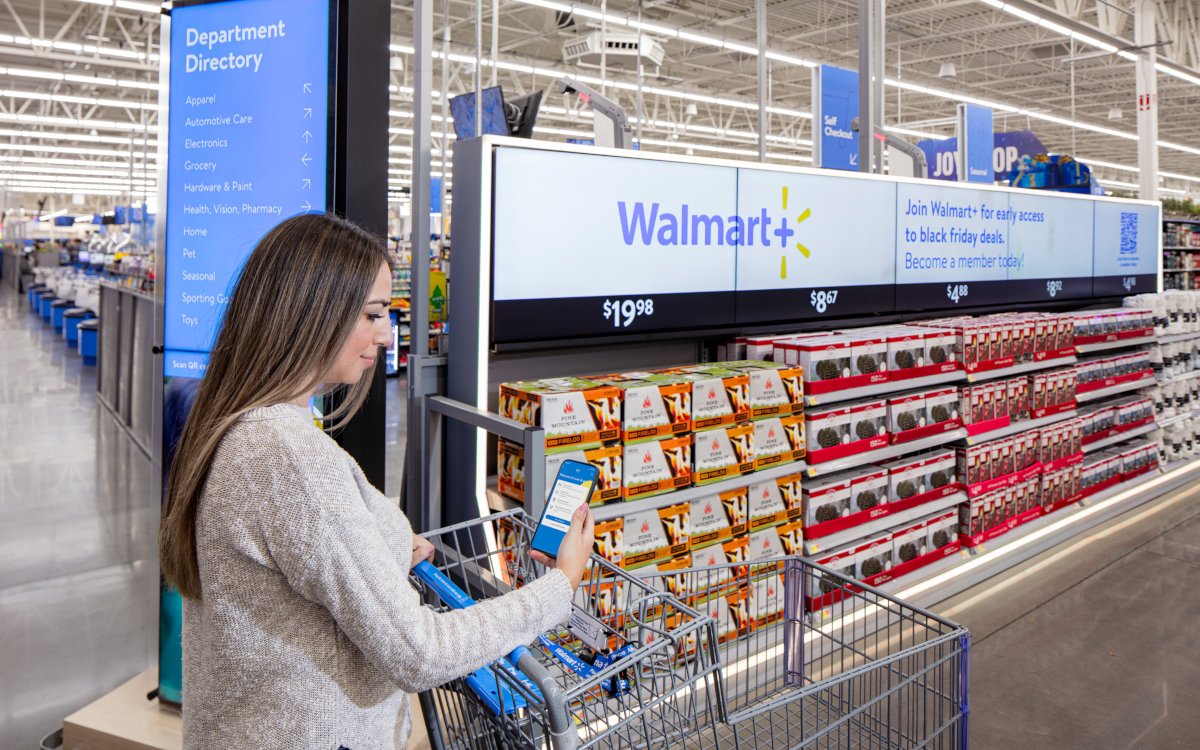Walmart disclosed its advertising revenues for the first time: in 2021, the world’s largest retailer generated retail media revenues of 2.1 billion. USD. In-store advertising sales and online channels have become relevant revenue drivers for Walmart. Retail media is booming.
By selling groceries, Walmart has become the largest retailer in the world. Walmart generated a total of $572 billion in sales in 2021, which is more than e-commerce giant Amazon, which recorded revenues of $469 billion in 2021.
But what’s really surprising are retail media revenues, which Walmart and Amazon each reported for the first time: Walmart generated $2.1 billion in Third-party advertising revenue with trade marketing and brand marketing campaigns. By comparison, the world’s largest out-of-home provider JCDecaux generated $3.1 billion in 2021.
Grocery retailers are becoming media companies. Retailers are increasingly realizing the value of their platforms – instore as well as online. Advertising at the point-of-sale is attractive thanks to very high frequency and a shopping mindset among consumers. Even though Walmart’s retail media revenue share is only 0.37% of total sales, the media business is extremely high margin quite opposite to the sale of groceries.
Amazon has already helped retail media achieve a breakthrough in e-commerce – Amazon generated a staggering USD 31 billion with 3rd party ads on its websites in 2021, already 6.6 percent of total sales.
The triumph of retail media is unstoppable in e-commerce; since the pandemic, retailers have also been generating in-store revenues with trade and brand marketing for the first time. This is a market segment in which not only the leading DooH-platform Broadsign operates successfully, but also many retail tech start-ups.
One of them is the Swiss analytics provider Advertima, which optimizes retail media in the store with AI solutions. „Our partnership with Posterscope UK builds exactly on this trend. The hypothesis: unlike trade marketing budgets, brand marketing budgets need audience analytics and smart targeting to be directed to in-store,“ Advertima CEO Iman Nahvi tells invidis.
In principle, there are two options for retailers – either outsource advertising rights to DooH media owners or retain control and take over marketing themselves. „Partnerships with media owners are firstly not lucrative enough in terms of margins, and secondly they don’t prioritize the network highly enough over the rest of the inventory. What’s needed are media sales people who market the network exclusively – either in-house or hired through an agency exclusively for their own network.“
With the breakthrough of retail media on retailers‘ e-commerce platforms in recent months, there is not only a general understanding of the business model, but increasingly expertise already in-house.
Iman Nahvi comments: „With retail media departments that have already been set up internally for eCommerce, retailers have precisely the media experts in-house who can drive such a systemic restructuring. But then the retailer must be prepared to manage digital signage projects from the retail media department and not from marketing, as has been the case in the past.“
DooH is booming – not only roadside, where OoH providers like Ströer are setting up thousands of digital touchpoints, but also in retail. Placing DooH touchpoints at the POS is not a new concept; PRN already equipped Walmart stores with CRT TVs 20 years ago. But until now, the business model wasn’t working, additional budgets beyond trade marketing weren’t available, and PoS advertising wasn’t very sexy. Now that eCommerce has unlocked the potential of retail media for the first time, the time is ripe for retail media instore.
DSS ISE 2022 covers trends and drivers in Digital Signage and DooH. Join us on 11th May at ISE.

